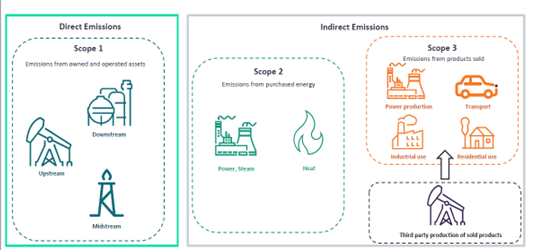Greenhouse Oil and Gas Emissions Reduction Market: Key Facts and Figures

The reduction of greenhouse gas emissions in the oil and gas industry is a crucial component of global efforts to combat climate change.

Buy the full report to know more about emission categories, download a free report sample
Here are some key facts and figures related to the greenhouse gas emissions reduction market in the oil and gas sector:
1. Global Emissions from Oil and Gas:
- The oil and gas sector is responsible for a substantial portion of global greenhouse gas emissions. In 2019, it accounted for approximately 15% of global CO2 emissions, making it one of the largest industrial contributors.
2. Major Greenhouse Gases:
- The primary greenhouse gases emitted by the oil and gas industry include carbon dioxide (CO2) and methane (CH4). Methane is particularly potent as a short-lived climate pollutant, with a much higher global warming potential than CO2 over a short time frame.
3. Methane Emissions:
- The oil and gas industry is a significant source of methane emissions, which often result from the production, processing, and transportation of hydrocarbons. Reducing methane emissions is a priority for emissions reduction efforts.
4. Flaring and Venting:
- Flaring and venting of natural gas are common practices in the industry. Flaring, in particular, releases significant amounts of CO2 into the atmosphere. Efforts are underway to minimize flaring and capture the gas for productive use.
5. Carbon Capture and Storage (CCS):
- Carbon capture and storage technologies play a critical role in reducing emissions from the oil and gas sector. CCS involves capturing CO2 emissions at the source and storing them underground to prevent their release into the atmosphere.
6. Emission Reduction Targets:
- Many oil and gas companies have set ambitious emissions reduction targets. Some have committed to achieving net-zero emissions by a certain date, often by 2050 or earlier.
7. Transition to Renewables:
- Some major oil and gas companies are diversifying into renewable energy sources, such as solar and wind power, as part of their emissions reduction strategies.
8. Regulatory Measures:
- Governments worldwide are implementing regulations and standards to limit emissions from the oil and gas industry. These measures often include emissions reporting, emissions caps, and carbon pricing mechanisms.
9. Industry Initiatives:
- Various industry initiatives and collaborations aim to address emissions reduction collectively. The Oil and Gas Climate Initiative (OGCI) is one example of an industry-led effort to reduce emissions.
10. Investment and Financing:
- A growing number of investors and financial institutions are incorporating climate-related criteria into their investment decisions. This can influence the availability and cost of financing for oil and gas projects.
11. Methane Detection Technologies:
- Advancements in methane detection technologies, including satellite-based monitoring, drones, and ground-based sensors, are helping identify and address methane leaks and emissions more effectively.
12. Energy Efficiency:
- Enhancing energy efficiency in the production, transportation, and refining of oil and gas is a critical component of emissions reduction efforts.
13. Renewable Natural Gas (RNG):
- The production and use of renewable natural gas, often derived from organic waste, offer a more sustainable alternative to traditional natural gas.
14. Carbon Markets:
- The development of carbon markets, such as cap-and-trade systems and carbon offset programs, provides economic incentives for emissions reduction in the oil and gas industry.
15. Public Awareness and Pressure:
- Public awareness of climate change and environmental issues is driving increased pressure on the oil and gas industry to reduce emissions and adopt cleaner practices.
These facts and figures highlight the significant challenges and opportunities in reducing greenhouse gas emissions in the oil and gas sector. Efforts to mitigate emissions in this industry are essential for addressing climate change and transitioning to a more sustainable and low-carbon energy future.
- Questions and Answers
- Opinion
- Motivational and Inspiring Story
- Technology
- Live and Let live
- Focus
- Geopolitics
- Military-Arms/Equipment
- Sécurité
- Economy
- Beasts of Nations
- Machine Tools-The “Mother Industry”
- Art
- Causes
- Crafts
- Dance
- Drinks
- Film/Movie
- Fitness
- Food
- Jeux
- Gardening
- Health
- Domicile
- Literature
- Music
- Networking
- Autre
- Party
- Religion
- Shopping
- Sports
- Theater
- Health and Wellness
- News
- Culture

